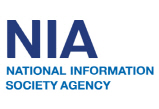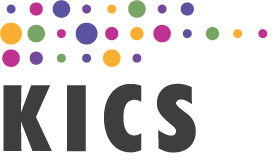Now 1697 visitors
Today:188 Yesterday:887
Total: 8117
395S 104P 46R
2025-12-14, Week 51 |
| Member Login |
| Welcome Message |
| Statistics |
| Committee |
| TACT Journal Homepage |
| Call for Paper |
| Paper Submission |
| Find My Paper |
| Author Homepage |
| Paper Procedure |
| FAQ |
| Registration / Invoice |
| Paper Archives |
| Outstanding Papers |
| Author Homepage |
| - Paper Procedure |
| - Journal Procedure |
| - Presentation Tips |
|
| Proceedings |
| Program with Papers |
| Plenary Session |
| Tutorial Session |
|
| Presentation Assistant |
| Hotel & Travel Info |
| About Korea |
| Accommodation |
| Transportation |
| VISA |
| Other Infomation |
|
| Photo Gallery |
| Scheduler Login |
| Seminar |
| Archives Login |
|
| Sponsors |

|

|

|

|

|

|

|

|

|

|

|

|
|
|
|
|
|
2010
 |
Title : Amateur Radio: More than a Hobby! |
|
Time : Feb. 7, 2010, 15:00 ~ 18:30 |
|
Speaker : Mr. Miroslav Skoric(University of Novi Sad)
Miroslav Skoric has two decades of experience in amateur radio (licensed amateur since 1989). Since the early nineties, he voluntarily participated in administering amateur radio servers in local radio clubs and societies, where he maintained various types of computerized amateur radio bulletin board systems (MS DOS, Windows and Linux platforms) equipped with VHF and HF radio frequencies and Internet connectivity. He has also performed tutorials in a local high-school amateur radio club, and published magazine/journal articles (listed in his amateur radio webpage http://tldp.org/HOWTO/FBB.html). As a tutorial instructor, he also recognized that having fun with computing and establishing amateur radio communications motivates school pupils and students to continue education in engineering and computing areas and increase their interest to pursue a career in technology. To promote this point of view, the instructor started spending his personal savings to travel and participate in domestic and international events. That volunteer work helped many people to get a technology bug and join the world of amateur radio communications. The instructors intention is to establish an alternative computer communication. To motivate students and teachers to join this project, the instructor published his conference reports in IEEE Region 8 News, IEEE Potentials, Proceedings of ARRL and TAPR Digital Communications Conference 2003, 2007 (USA), WSEAS Transactions on Communications (Greece), AMSAT-DL Journal (Germany), several domestic publications etc. In October 2009 Miroslav Skoric published a specific book chapter oriented towards using amateur radio in education, as a way of promoting computer communications, in Handbook of Research on Human Performance and Instructional Technology (printed by IGI-Global, USA).
Abstract : This tutorial covers the opportunities of implementing amateur radio digital telecommunications in educational and home environment. The intention is to motivate communication researchers & practitioners, teachers and students to develop amateur radio infrastructure in their homes, offices, schoolyards and university campuses and interconnect with other communicators, schools and academic institutions all around the globe – by using free amateur radio frequencies. To offer an alternative and cost-effective option for remote communicators in rural areas and developing countries, the tutorials gives many practical suggestions related to hardware and software solutions for using at work or home.
|
 |
Title : Service evolution for next generation network |
|
Time : Feb. 7, 2010, 15:00 ~ 18:30 |
|
Speaker : Dr. Gyu Myoung Lee (Institut Telecom, Telecom SudParis)
Gyu Myoung Lee received B.S. degree in electronic and electrical engineering from Hong Ik University, Seoul, Korea, in 1999 and M.S., and Ph.D. degree in school of engineering from Information Communications University (ICU), Daejeon, Korea, in 2000 and 2007, respectively.
He is currently with Institut TELECOM, TELECOM SudParis as a research fellow, specializing in network/service architecture and standards development. Since 2007 he has been working as an invited researching staff in Electronics and Telecommunications Research Institute (ETRI), Korea. He worked as a research professor in ICU, Korea and as a guest researcher in National Institute of Standards and Technology (NIST), USA, in 2007. He also worked as a visiting researcher in the University of Melbourne, Australia, in 2002. His research interests include ubiquitous networking and IPTV services for NGN, IPv6 protocols, and traffic engineering including optical switching technologies.
Dr. Lee has actively participated in standardization meetings including ITU-T SG 13 (Future Networks including mobile and NGN), IPTV-GSI, and IETF and currently serves as a Rapporteur on evolution towards integrated multi-service networks and interworking. He has contributed more than 90 proposals for standards and published more than 50 papers in academic journals and conferences. He received several Best Paper Awards in international and domestic conferences and served as a reviewer of IEEE journals/conference papers and a organizer/member of committee of international conferences.
Abstract : For operators/providers, there are many activities for developing new services and business model in NGN. So, in this tutorial, current trends of NGN and services in the evolutional aspects are briefly introduced. Based on several requirements to support new services, key architectural models for service in NGN and characteristics are discussed with standardization activities. In particular, new concepts such as NGN-Web convergence, ubiquitous networking(i.e., Internet of Things) are also introduced. Among several examples of services, technical issues for home network and IPTV, networked vehicle, etc are discussed. Finally, the related EU projects for future service evolution are introduced.
|
 |
Title : Technical Evolutions and Challenges with Recent ISO/IEC MPEG and ITU-T VCEG Standardization Efforts toward Next-generation high-performance Video Coding |
|
Time : Feb.7, 2010, 15:00 ~ 18:30 |
|
Speaker : Prof. Munchurl Kim (KAIST)
Munchurl Kim has received the B.E. degree in Electronics from Kyungpook National University, Korea in 1989, and M.E. and Ph.D. degrees in Electrical and Computer Engineering from University of Florida, Gainesville, USA, in 1992 and 1996, respectively. After his graduation, he joined Electronics and Telecommunications Research Institute (ETRI) where he had worked in the MPEG-4/7 standardization related research areas and had led realistic broadcasting and broadcasting media research teams in ETRI. In 2001, he joined, as Assistant Professor in School of Engineering, Information and Communications University, Taejon, Korea. Form March 2009, he is now Associate Professor in Department of Electrical Engineering, KAIST. Since 1997, he has been involved in MPEG-4/7/21/A/E and H.26x standardization works and served as Head of Korean MPEG delegates in 2000. He has contributed more than 120 technical proposals. Regarding the recent efforts on high-performance video coding (HVC) by MPEG and next-generation video coding (NGVC), he focuses on the studies in large transform kernels for ultra high definition video, enhanced intra and advanced inter prediction schemes for highly efficient coding efficiency. He has more than 10 technologies that have been adopted in MPEG-4/7/21/A/E standards and holds more than 43 domestic filed patents and 6 international filed patents for standard related technologies. His research includes video coding, patterning, context understanding and multimedia systems.
Abstract : This tutorial introduces recent advances in video coding technologies and related international standardization activities in ISO/IEC MPEG and ITU-T VCEG. The tutorial will cover intra predictive coding, inter predictive coding, transform and quantization, interpolation for motion estimation and post filtering technologies towards next-generation and high-performance video coding with mobile video as well as ultra high definition video.
|
 |
Title : Femtocell: Business Opportunities and Deployment Challenges |
|
Time : Feb. 8, 2010, 09:00 ~ 12:00 |
|
Speaker : Dr. Rashid A. Saeed (Telekom Research and Development (TMRND))
Dr. Rashid A. Saeed received his Ph.D. major in communications network engineering from Universiti Putra Malaysia (UPM) in 2007. He is a research officer in Telekom Research and Development (TMRND) since 2009 and MIMOS Berhad from 2007 to 2009, where he has been involved in research, development, design, and prototyping wireless communications systems, including WiMAX and WLAN heterogeneous networks. He is a WiMAX certified RF and Core network engineer from WiMAX forum. He published more than 60 research papers/book-chapters/tutorials in peer-reviewed academic journals and conferences. Dr Rashid has filed 5 patents where he has awarded the “Gold Badge” and “Platinum Badge” from MIMOS Berhad’s CEO for outstanding research achievements. He is a senior IEEE member and Sigma Xi. He is also certified WiMAX RF engineers from WiMAX forum.
Abstract : Femtocell access point (FAP) or home base station (HBS) is a base station designed for use in user premises (home or small business). It intends to serve small number of users i.e. 4 users and covers about 30 meter square similar to existing WiFi access points. The uniqueness of femtocell -in contrast with micro and macrocellular- it connects to cellular network through broadband network i.e. xDSL. The motivation of femtocell is to improve signal quality in indoor environments and provide high speed wireless access mobile-Internet users. However, femtocell introduces new challenges to the mobile operators (MOs) in terms of handoff between femto and macrocells, interference management, localization and synchronization, security and network management. This tutorial intends to give the audience overview and the open research issues of the new technology.
|
 |
Title : Wireless Enhancements of TCP for Network Mobility (NEMO) |
|
Time : Feb. 9, 2010, 09:00 ~ 12:00 |
|
Speaker : Prof. Debashis SAHA (Indian Institute of Management (IIM))
Debashis Saha received the B.E. (Hons) degree from Jadavpur University, Kolkata, India, and the M.Tech. and Ph. D. degrees from the Indian Institute of Technology (IIT), Kharagpur, all in electronics and telecommunication engineering.
He is currently a Full Professor with the MIS and Computer Science Group, Indian Institute of Management (IIM) Calcutta. Previously, he was with CSE Dept, Jadavpur University. His research interests include pervasive communication and computing, wireless networking and mobile computing, WDM optical networking, ICT for development and network economics. He has supervised 13 doctoral theses and published about 200 research papers in various conferences and journals, and directed four funded projects on networking. He has coauthored several book chapters, a monograph and five books including Networking Infrastructure for Pervasive Computing: Enabling Technologies and Systems (Norwell, MA: Kluwer, 2002) and Location Management and Routing in Mobile Wireless Networks (Boston, MA: Artech House, 2003). He is the Co-Editor-in-Chief of the International Journal of Business Data Communications & Networking (IJBDCN), serves on the editorial board of three international journals, member of the organizing/program committee of several international conferences, and is a regular reviewer of several international journals.
Dr. Saha was the recipient of the prestigious Career Award for Young Teachers from AICTE, Government of India, and is a SERC Visiting Fellow with the Department of Science and Technology (DST), Government of India. He is a Fellow of West Bengal Academy of Science and Technology (WAST), Senior Life Member of Computer Society of India, Senior Member of IEEE, and a member of ACM, a member of the International Federation of Information Processing Working Group’s 6.8 and 6.10. He was the founder chair of Calcutta Chapter of IEEE Communications Society (2003-2008) which won the ‘Best Chapter of the World’ award in 2007.
Abstract : TCP is the de facto standard for data transport. Network mobility (NEMO) is a mobility management solution to allow various moving networks (e.g., on-board WiFi networks) to be seamlessly connected to the Internet. Though several enhancements have improved the performance of TCP under wireless mobility, they may not be equally effective in NEMO which poses a separate set of challenges from those offered by terminal mobility alone. We explore the challenges offered by NEMO to TCP’s applicability in such networks and discuss the potential solutions (e.g., TCP-Snoop, obTCP etc.) with a comparison of their merits and demerits.
|
|
|
|
|
ⓒ Copyright 1999. ICACT (ISSN 1738-9445) & Global IT Research Institute(GiRI) All rights Reserved. Contact: office (at) icact . org Tel:+82-70-4146-4991
|
1713 Obelisk, 216 Seohyunno, Bundang-gu, Sungnam Kyunggi-do, Republic of Korea 13591
Business License Number : 220-82-07506, President: Thomas ByeongNam Yoon Ph.D. |
|
(13591)경기도 성남시 분당구 서현로 216 오벨리스크 1713호
(사)글로벌IT연구회 사업자등록번호 : 220-82-07506 대표자 : 윤병남
|
|
| |






